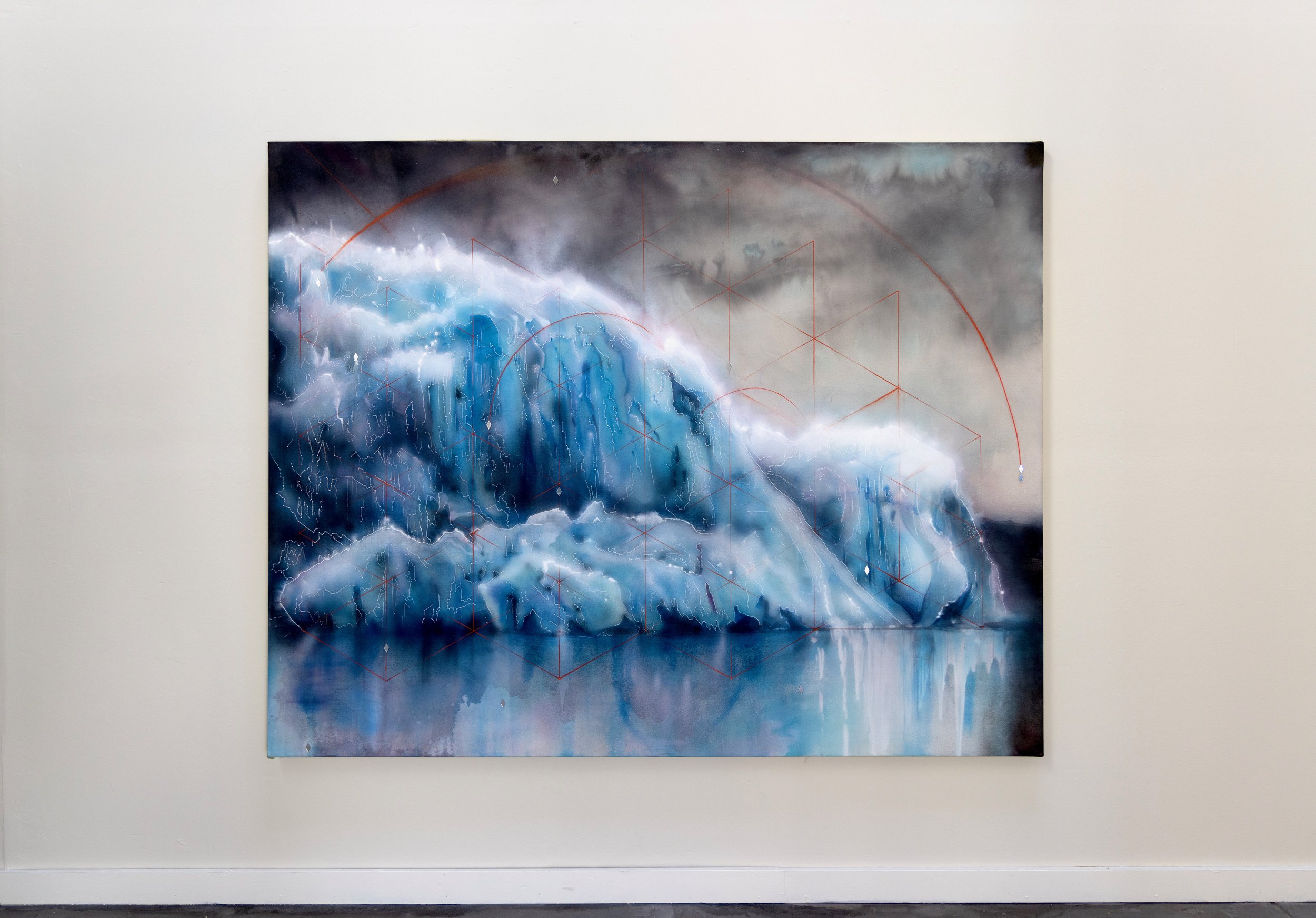The Mills College Art Museum was founded in 1925,
With over 12,000 objects, the collection—which is used in exhibitions and loaned to other museums—has significant strengths in works on paper, photography, California and Asian ceramics, and important works by major women artists.
As an academic museum, MCAM is a space for interdisciplinary learning, professional experience for students, and cutting-edge faculty collaborations. Exhibitions are focused primarily on contemporary artistic practices, with an emphasis on commissioning artists to create and exhibit new work designed to engage visitors in critical and creative thinking about the world we live in.
Accelerated Systems, 2024
Ink, acrylic, mica, mineral pigments and mirror on canvas
65” x 82”
Accelerated Systems: Jökulsárlón Glacier in Iceland is one of the last remaining frozen realms on our Earth, these colossal ice formations command the seas and float away from the glacier, accelerating the melting time as they break off. A mesmerizing and rare spectacle unfolds, a shelf or iceberg calved from its glacier. After dramatically splitting away from the parent shelf, the big icy chunk tips and rolls as gravity pulls most of its weight underwater, this calving iceberg is tousled, shaped and carved by the elements, and through this process flips to reveals its ancient underbelly of stunningly deep blue tones of sculpted forms. Its massive size cannot be understated, as it transforms and melts back into its liquid form one can observe small air bubbles of ancient air, from millennia past, trapped in this diminishing sculptural body, flattened bubbles inside this pristine ancient ice. This happens when air pockets between snowflakes are trapped in pores between ice crystals as the ice makes its way from the upper layer of a glacier to deep inside it. Scientists say that ice bubbles peculiar shapes reveal how fast the water froze and how much gas was dissolved in it. Telling a story from many moons ago.This image depicts a glacier the artist met in 2016 in Iceland. Nearly a decade later its liquid form may be making its way across the oceans as a maelstrom or an atmospheric river

